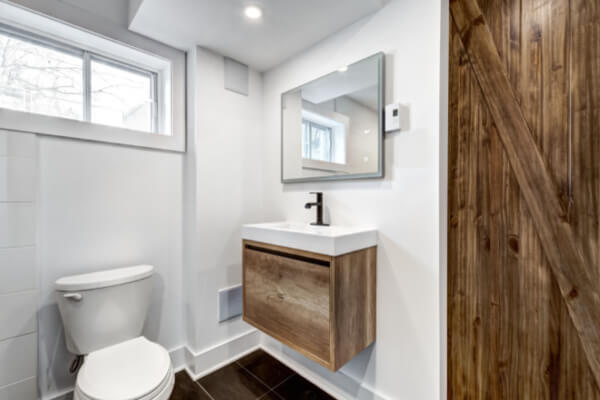Now more than ever, Canadian homeowners are investing their money back into their homes. According to a recent Royal LePage survey 1, more Canadians see the value of renovating key areas of their home, such as bathrooms and kitchens, which typically yield 100% or more return on investment. For those who aren’t willing to invest a large amount of money, simply putting fresh paint on the walls can increase the value of a home by 12%. With the uncertainty of the market and rising building material costs, increasing the value of your current assets and focusing on ROI is at the forefront.
Read on to learn about an income suite, which is a high ROI renovation, and how to build one.
What Is An Income Suite?
One of the many popular home renovations to increase the value of your home is creating an income suite. Also known as the in-law suite, a secondary suite is a separate unit within your home that has its own private entrance, bathroom, kitchen, and sleeping area. Unlike an in-law suite, income suites are primarily made to create extra rental income. Before you get excited about how easy this sounds and start building one, note that there are rules and regulations that homeowners must follow before they build and rent out their suite.
How Do You Build An Income Suite?
Whether you have a pre-existing space, such as a legal basement suite, or you’re looking to convert one of your floors into a suite, you have to ensure that you have all requirements and pass all inspections prior to using the space or renting it out. These codes and regulations are in place to protect both the landlord (yourself) and your long-term renter.
If you’re creating a new suite, the residence needs to be at least 5 years old, the house must be detached or semi-detached, no significant alterations can be made to the exterior of the home for the sole purpose of the suite, and the secondary suite must be smaller than the rest of the house with a separate entrance, it must include proper kitchen and bathroom facilities, and lastly it must meet property parking requirements.
Additionally, the property and suite must meet all Ontario Building Code requirements, residential zoning laws, property standards, and fire and electrical codes. You may also require a permit before transforming your single home into a multi-person home.
If you already have an existing suite that meets the requirements, you will need to get an inspection to make sure all code requirements are up-to-date. For future minor repairs, you won’t need a permit, but if you plan to take on any larger renovations, such as updating the bathroom or kitchen, you may be required to obtain a permit. Always double-check with the city if you’re unsure. Check out some more income suite ideas here.
Income suites are a great way to invest in your home. Plus, having the additional renter income can help offset your mortgage payment. With the extra spend, you can tackle any other projects that need to be done, and maybe even some that you want to be done. It’s important to ensure that you follow all rules and regulations when converting your space into an income suite, otherwise, it won’t be worth it. Home improvements are not the place to take shortcuts – be sure to hire local, verified professionals to complete this project for you.

